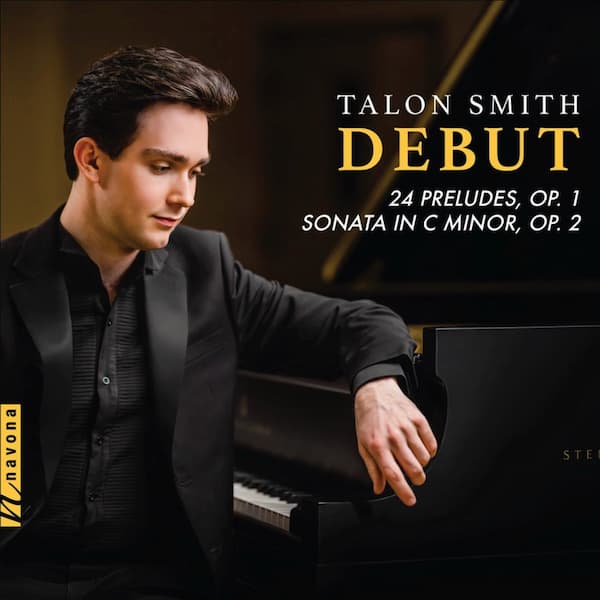Widely acclaimed for his creative genius, Víkingur Ólafsson embarked on a venture of Bach’s Goldberg Variations, a work that has witnessed countless interpretations. The challenge of approaching such a frequently recorded work lies in avoiding redundancy or novelty for its own sake. Yet, Ólafsson’s offering, accompanied by his thoughtful and eloquently penned liner notes, would be a notable addition to the discography, even if some interpretive choices could be controversial at times.

Víkingur Ólafsson © Markus Jans
American pianist and harpsichordist Rosalyn Tureck’s rendition of the Goldberg Variations, where she observed repeats throughout the work (except in the Aria Da Capo), has established a “convention” where repeated sections feature something different – such as emphasising another voice, adding ornamentation, or altering the articulation. While academic consensus remains elusive, many pianists have adopted this approach to repeats (e.g. Perahia, Barenboim, Peter Serkin, etc.), and it’s the same with Ólafsson. For instance, in the repeats, Ólafsson introduces an enticing shift in the tonal palette in Variation 10 (Fugetta) and voicing in Variation 8 and 15 (Canone alla Quinta).
Following the famous Aria, Variation 1, a Corrente-like variation, hurtles at an excessively breakneck speed, obscuring the underlying dancing rhythm. By contrast, Variation 3 (Canone all’Unisono) showcases a beautifully maintained legato of two voices in the right hand, evoking a cello’s pizzicato in the left. Played again at full throttle, Variation 5 requires much hand-crossing when played on the piano, dispatched with apparent ease by Ólafsson.
J.S. Bach: Goldberg Variations – Variation 1
The tempo of Variation 7, confirmed to be a Gigue as Bach marked al tempo di Giga in his personal copy discovered in 1974, is puzzlingly slow. Even if some argue that the Giga refers to a French gigue, the variation proceeds at a pace too leisurely even for that. Nonetheless, Variation 12 (Canone alla Quarta) is a pure delight. Its conviviality infectious and mood uplifting, this variation captivates me within the first few bars, with its potent pulse reminiscent of the stamping motion in dances. The ensuing Sarabande, however, is a stark contrast in its ambience, benefitting from Ólafsson’s delicate touch, careful timing, and a singing-like approach in the right hand.
J.S. Bach: Goldberg Variations – Variation 12: Canone alla Quarta
J.S. Bach: Goldberg Variations – Variation 13
Variation 14 and the subsequent toccatas demonstrate astounding clarity and mastery of the keyboard, although occasionally over-speeded for my taste. On its heels comes the introspective Canone alla Quinta in G minor, yet the two-note sigh motif fails to elicit much melancholy.
Variation 16, a French Overture, commences the second half of the Variations: bright and clean, but not as grand or majestic as one would expect of an overture. Variation 18 (Canone alla Sesta) charms with alluring tone colours, while the minuet-like Variation 19 reveals the intricate interplay between soprano, alto, and tenor voices.
J.S. Bach: Goldberg Variations – Variation 18: Canone alla Sesta
J.S. Bach: Goldberg Variations – Variation 19

© Deutsche Grammophon
Described as the “black pearl” of Goldberg Variations by Wanda Landowska, Variation 25 sounds curiously monotonous initially, warranting more expressiveness and tension to capture its transcendental sorrow, bitterness, and anguish, particularly in the chromatic passages. However, Variation 26 exhibits lucidity with the double counterpoint coming through clearly.
J.S. Bach: Goldberg Variations – Variation 26
After the Quodlibet, the return of the Aria offers, as Ólafsson wrote, a chance to “marvel at the Aria in its pure, original form once more, to savour this tender farewell that also feels like a new beginning”.
The Variations move at a brisk pace overall, clocking in at 1 hour and 14 minutes even with almost all repeats observed. Independent voices are usually characterised by distinct personalities and articulation, with Ólafsson’s signature tone often shining through. However, a more generous use of ornaments in the repeats, akin to Baroque musicians’ practice, would have further added flavour to the music.
As Ólafsson aptly discusses in the liner notes, a paradox between mathematical perfection and creative freedom constantly exists both in the piece itself and its interpretation. Rather than venerating the Goldberg Variations as a sacrosanct monument, he views it as a piece “composed for music-lovers, to refresh their spirits”, in Bach’s own words. While indeed invigorating, the expressivity and deeply human essence intrinsic to Bach’s music are sometimes missing in this recording.
This album will be released by Deutsche Grammophon on 6 October.
For more of the best in classical music, sign up for our E-Newsletter





Splendido!
Musical splendour!
And intensely sensitive writing of yours Anson.
Grazie di cuore.